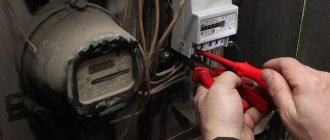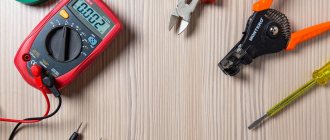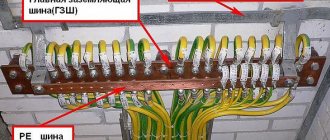Energy conservation is becoming an increasingly pressing issue. First of all, the need to solve it is evidenced by utility bills, which are growing every year. Payment for electricity is gradually becoming not the smallest item in the family budget. Turning off the boiler, sitting without light in the dark and reducing the heat of the furnace coil are half measures that will not bring the expected effect. The benefits of civilization must be used, but done correctly. The problem of saving electricity in apartments and houses needs to be solved globally and comprehensively. The initial investment will pay off over time, which will bring tangible financial relief.
Reasons to save energy
Saving electricity reduces the risk of accidents at substations.
The decision to save electricity by any means will help not only reduce the financial burden of paying monthly bills. It should be remembered: the more power consumers absorb, the greater the burden falls on the city and the country as a whole.
Competent and legal saving of electricity in an apartment has the following effects:
- Reducing the level of toxic emissions into the atmosphere. Improving the environment, cleanliness of air, soil and water bodies.
- Reducing the risk of accidents at power plants associated with operating at the limit of capacity.
- Saving natural resources, which are spent in huge quantities on thermal power plants that provide energy to populated areas.
- Creating a comfortable indoor environment. This refers to the illumination and the absence of the harmful electromagnetic field that some low-quality household appliances create.
- Development of new technologies, reduction of energy intensity of production, and therefore the price of products, their competitiveness on the world market. All this leads to an increase in the well-being of the population.
- Extending the service life of transformer substations, power lines and internal communications. Increased load leads to accelerated wear of equipment.
Saving electricity eliminates the possibility of being left without electricity due to a line breakdown at the scale of an apartment, house or settlement.
Unclear wording
Let's turn to sites that advertise a device for saving current. This is a separate topic for analysis. And all because they have all the clues that simply scream that you are being deceived.
And the most important of them is vague, confusing descriptions of the characteristics of the device and the principle of its operation. Every person involved in sales will tell you that everything needs to be explained to the buyer, like a small child. It cannot be described in complex terms, much less with scientific conclusions.
Experts say that if you try to understand what is said in the descriptions, you end up with such unrealistic things that it is impossible to imagine them in this world. If we translate them into a more understandable language, it turns out something like “plug the H device into the outlet, and you will always have a complete absence of gravity in your house.” This is impossible, just like what the saver salesmen say.
Correct use of electrical appliances
Housing is often overcrowded with a huge number of energy consumers. You can save on electricity not only by reducing the intensity of their operation, but also by choosing the right operating modes.
- Washing machine. To wash bed linen and lightly soiled clothes, 20-30 minutes are enough. The use of modes for 1-3 hours is accompanied by unreasonable overspending.
- Heating. To properly heat a room during the cold season, heaters with a power of 1-2 kW are used. During the day, consumption will be up to 48 kW. It is enough to dress warmly and reduce the power by half.
- Plate. If there is poor contact between the inverter and the cookware, food will take much longer to cook, resulting in increased energy consumption.
- Dishwasher. You should set the economy mode, which consumes only 1 kW per cycle.
- Kettle. There is no point in heating 2 liters if the water will cool down by the next tea party. You need to pour as little as possible.
We should not forget about small consumers: chargers and electronic devices operating in standby mode. In a day they can add up to 2 kW to the meter.
Let's look in the box
Every energy saver purchased on the Internet generates only negative reviews from buyers. They all say that this is a deception and a scam, that the money was wasted, sent to the fund for the enrichment of the next scammers.
But not everything in the reviews can be called true. It still performs some action with electrical networks. Therefore, it is interesting to see what is inside this miracle device.
Anyone who knows a little about radio components will immediately notice that the device consists of one or two diode light bulbs, several diodes and a capacitor or two. There is no more super-technique or super-details there.
The entire set of “know-how” components can be purchased at the nearest radio store and soldered this device yourself. There may only be some questions in what order to connect the parts, which will later become an energy saver. Its scheme is carefully hidden by sellers, since people who are more or less in the know will see from it how they are trying to deceive them. If a person is well versed in radio engineering, then he will understand everything from the photo of the “insides” of the device.
Advantages of energy-saving household appliances
A real way to save energy is to use economy-class household appliances. Initial investments will give a long-term positive effect over time.
Examples of such equipment:
- Computer. Power supplies together with video cards and a monitor can absorb up to 1 kW/h. You should either disable some functions or purchase products with an economy mode. Modern laptops are the best choice. With greater capabilities, they consume no more than 100 W/h.
- TVs with satellite set-top boxes. Enabling the economy mode allows you to reduce current consumption by 3 times.
- Printing devices. They are used periodically, but are not removed from the network. If you buy a device with an energy saving function, the effect will be up to 500 kW per year.
- Washing machine. The main consumer is the heating element. Products with an ultrasonic bath consume 80% less current.
- Vacuum cleaner. Modern devices are equipped with a contamination sensor, which reduces operating efficiency and increases its duration.
- Air conditioner. Energy saving is achieved by installing advanced compressors in modern models, reducing consumption by 40-50%.
It is worth paying attention to kitchen equipment. You can find efficient stoves, hoods and water heaters on sale.
When the energy saver “works”
However, we must pay tribute, in rare cases, such savers are actually able to reduce the amount of electricity recorded by the meter. On some sites you can even find reviews from satisfied customers about successful savings when using saving boxes and other boxes. How can this be explained?
This is explained by the fact that individual energy saving devices are capable of creating pulses in the electrical network that cause the magnetic flux to lag behind the load current and thereby introduce an error into the operation of the meter. This is achieved not at any load, but only at a certain value.
But such a “trick” can only be done with old-style meters, which were widely used in the Soviet Union.
Modern metering devices are simply not susceptible to the influence of not only such “interference,” but also many others.
Equipping electrical appliances without an auto-shutdown function with external time relays
Even if devices have such a function, it is activated very rarely. If devices cannot switch off automatically, they can be equipped with external time relays. Such modifications should be made to the air conditioner, room heater, heated towel rail, stove and floor fireplace. If necessary, a timer is installed on the computer system unit.
Such devices provide the following advantages:
- switching on and off exactly in the set time corridor;
- operation of devices only when required;
- preventing burnout of devices due to overheating;
- creating comfortable psychological conditions, since a person does not need to worry about his household appliances;
- significant reduction in electrical current consumption.
One such device will provide significant assistance in the fight to reduce utility bills.
Advantages of a two-tariff meter
An individual single-phase two-tariff meter takes into account current consumption at different prices depending on the time of day. In the period from 23.00 to 07.00, the cost of services is reduced by 50%. At this time, powerful consumers are started: water heaters, ovens, dishwashers and washing machines. Some people who normally tolerate being awake at night work on the computer and clean the apartment with a vacuum cleaner.
The advantages of using such a device are obvious:
- reducing the financial burden of payments;
- reducing the load on home and city communications;
- taking energy at a time when power plants are in dire need of releasing it.
The cost of a two-tariff meter and its installation is quite significant. But taking into account the current tariffs, it pays for itself within a year, then brings a significant profit.
What's inside the device
In order to finally make sure that this device does not produce any miracles of savings, let’s disassemble it and look inside.
This device does not contain anything ingenious. There are a fuse, a capacitor, LEDs, and diodes for rectifying AC voltage. This is its electrical diagram:
A capacitor is needed to smooth out the rectified voltage. And rectified voltage is necessary to power the LEDs. That is, the device works for itself. It does not pass any payload through its circuit.
Think about the savings that can come from such “internals”? The main effect in the device is carried by the capacitor. It improves the power factor. Similar things are found in throttle lighting lamps.
This is exactly what manufacturers are playing on. They claim that the device is capable of compensating for reactive power losses when connecting devices such as refrigerators, washing machines, and vacuum cleaners. In the advertisement they clearly measure the current with a clamp meter and the readings actually decrease!
But advertisers do not say one important point:
- ⚡
firstly, the clamps measure the total current (its active and reactive components) - ⚡
secondly and most importantly, when you turn on the device, due to the capacitor inside, the coefficient increases. power
The formula for calculating power consumption is:
P=I*U*cosϕ
P-power, I-current, U-voltage, cosϕ-coefficient. power
From the formula it is easy to understand that if your current decreases, say by 20%, and at the same time (and this is exactly what happens “thanks to” the device) the coefficient increases. power by the same 20%, the power consumption was 2 kW, so it will remain 2 kW.
The above text outlines the essence of the work regarding complete energy saving devices (that is, they have at least a capacitor). Recently, the following examples have become increasingly common:
Saving electricity through heat conservation
This direction is relevant for objects with central and autonomous heating, since the power of heating devices directly depends on the quality of insulation of real estate objects. The less heat loss, the lower the intensity of the heaters.
You can insulate a room in the following ways:
- sealing cracks in walls, windows and doors;
- installation of modern doors with foam or basalt filling;
- installation of double-glazed windows with energy-saving glass;
- finishing the facade with polystyrene foam, mineral wool or polyurethane foam;
- gluing a reflective screen behind the radiators.
If the issue of combating heat loss is approached comprehensively, current consumption for home heating can be reduced by 30-50%.
Saving electricity on lighting
The easiest way to save energy is to install LED lamps. These products are characterized by low power with high brightness, soft glow and long service life. Mass production of such lamps led to a significant reduction in retail prices, making them available for purchase in large quantities.
Another saving measure is to turn off the lighting when it is no longer needed. Even one lamp left on in the bathroom will consume 100 W or more per night. You should make it a habit to check the light before going to bed and leaving the room.
Another condition that affects the quality and operating time of lighting is the cleanliness of lamps and shades. Vapors and dust deposited on them reduce the efficiency of the devices by 20-25%. Contamination must be removed in a timely manner; it will not take much time and effort.
We make the device with our own hands
We already mentioned earlier that you can make an energy saver with your own hands. To do this, you just need to buy a base, solder a few parts into it and attach a plug. In the old fashioned way, you can make an ordinary soap dish with the body, which must be covered with tape on all sides so that it does not open.
But finding a detailed diagram of this device is almost impossible. Manufacturers hide it, and those who understand the principle of operation of the device consider it beneath their dignity to draw up a diagram of a completely useless device.
Therefore, it is better to forget about this idea and think about what more realistic things you can save on. For example, replace some light bulbs in the house with less powerful ones, where appropriate: corridor, basement, toilet. This will give approximately the same percentage of savings, or even more, than an expensive Chinese device.
Sockets, extension cords with socket block and surge protectors with switches
Old wiring, switches and sockets cause increased current consumption and pose a fire hazard. Due to poor contacts and insufficient cross-section of the cable cores, the network overheats, the current parameters are disrupted, which leads to incorrect operation of the devices and devices connected to it. This causes increased energy consumption and is one of the prerequisites for costly equipment breakdowns.
To protect yourself from such troubles, you should do the following:
- change the wiring;
- install new sockets with built-in stabilizers and relays;
- purchase surge protectors with switches.
The use of extension cords with multiple sockets allows you to reduce the number of cables in the room. The presence of a switch makes it possible with one movement to de-energize and then activate several devices operating in standby mode at once. This is one of the conditions for saving energy in an apartment.
The presence of pulse and linear fuses prevents household appliances from burning out during power surges. Built-in stabilizers convert the current within the specified parameters, which ensures stable operation of the devices in normal mode. This also helps reduce energy consumption.
Losses and types of loads
A little theory, but without abstruse formulas, so to speak, for dummies. Those who have studied electrophysics know that there are losses during the transmission of electricity, and in networks with alternating current everything is much more complicated than in the case of direct current; in addition to Ohm’s law, there are a bunch of other laws and effects that cause losses to increase.
A significant contribution to losses, in addition to all others that we will not consider, is the power factor (cos φ), the higher it is, the lower the losses. The ideal load is active, from the point of view of minimal losses in the wires, for example, an electric heater with a heating element, its power factor is 1.
Inductive and capacitive reactance separately are two types of reactance, but with opposite phase shifts; if they are connected in parallel, then with the correct calculation of the ratings they compensate each other. Any of the two types of reactance is harmful because it causes current in the networks. No work is done (cos φ < 1), and losses are present.
Reactive loads – inductive and capacitive
For example, you can calculate the losses that a household meter must take into account if a reactive load is turned on. I calculated everything in the ElectroDroid program.
If you connect a reactive load to the network - a capacitor with a capacity of 5 μF, such as in the device described above, then a current of approximately 0.5 A will flow in the network.
Let’s say for copper wiring 10 m long and with a cross-section of 2.5 mm sq, from the meter to the outlet where the device is turned on, the losses will be as much as 0.07 V and 0.035 Watt! Under all favorable conditions, this is the maximum that such a device can save if it compensates for the inductive load by 100%! Impressive numbers
This was a long time ago, now marketers seem to have calmed down with this thing, or maybe people have wised up and don’t take the mythical device anymore...











